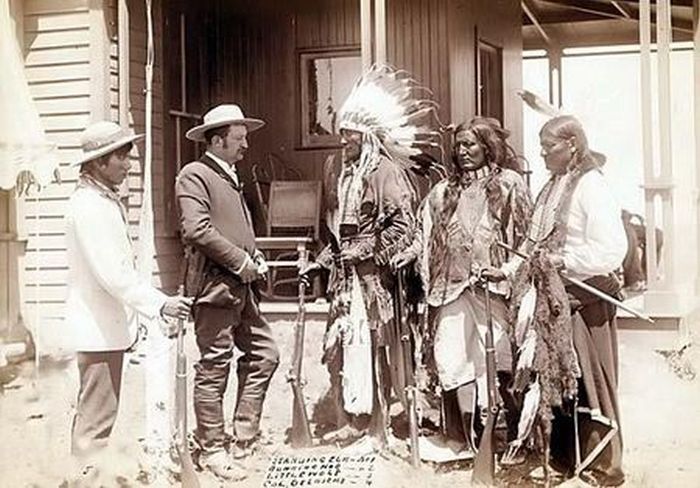|
|
History: American Old West, United States
|
Childhood on the American frontier is contested territory. One group of scholars, following the lead of novelists Willa Cather and Laura Ingalls Wilder argue the rural environment was salubrious. Historians Katherine Harris and Elliott West write that rural upbringing allowed children to break loose from urban hierarchies of age and gender, promoted family interdependence, and in the end produced children who were more self-reliant, mobile, adaptable, responsible, independent and more in touch with nature than their urban or eastern counterparts. On the other hand historians Elizabeth Hampsten and Lillian Schlissel offer a grim portrait of loneliness, privation, abuse, and demanding physical labor from an early age. Riney-Kehrberg takes a middle position.
• Bison versus cattle
The rise of the cattle industry and the cowboy is directly tied to the demise of the huge bison herds of the Great Plains. Once numbering over 25 million, bison were a vital resource animal for the Plains Indians, providing food, hides for clothing and shelter, and bones for implements. Loss of habitat, disease, and over-hunting steadily reduced the herds through the 19th century to the point of near extinction. Overland trails and growing settlements began to block the free movement of the herds to feeding and breeding areas. Initially, commercial hunters sought bison to make "pemmican", a mixture of pounded buffalo meat, fat, and berries, which was a long-lasting food used by trappers and other outdoorsmen. Not only did white hunters impact the herds, but Indians who arrived from the East also contributed to their reduction. Adding to the kill was the wanton slaughter of bison by sportsmen, migrants, and soldiers. Shooting bison from passing trains was common sport. However, the greatest negative effect on the herds was the huge markets opened up by the completion of the transcontinental railroad. Hides in great quantities were tanned into leather and fashioned into clothing and furniture. Killing far exceeded market requirements, reaching over one million per year. As many as five bison were killed for each one that reached market, and most of the meat was left to rot on the plains and at trackside after removal of the hides. Skulls were often ground for fertilizer. A skilled hunter could kill over 100 bison in a day.
By the 1870s, the great slaughter of bison had a major impact on the Plains Indians, dependent on the animal both economically and spiritually. Soldiers of the U.S. Army deliberately encouraged and abetted the killing of bison as part of the campaigns against the Sioux and Pawnee, in an effort to deprive them of their resource animal and to demoralize them.
|
|









